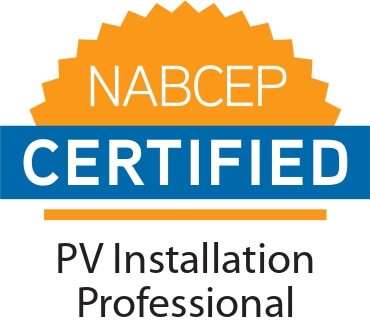All-black solar modules and racking are definitely an option we encourage customers to consider. In fact, at least one HOA in our area requires all-black for a solar system to be approved by the reviewing committee.
On some houses or roofs, an all-black system looks very subtle and elegant, in my opinion. You may not agree.
But appearance aside, there are two disadvantages: First all- black modules usually cost a little more. Second, they’re slightly less efficient than the clear (silver-framed) modules. That’s because all-black modules tend to get hotter in direct sun, and more heat means lower voltages and slightly less production.
For example, take a look at the PTC ratings for two popular solar module manufacturers – one with clear (silver) frames and white backsheet, the other with black anodized frame and black backsheet. By the way, PTC stands for PVUSA Test Conditions. This is a California lab that most in the industry consider to be the absolute gold standard for verifying the actual (real-world) performance that can be expected from solar components.
Solarworld
Solarworld 285 watt , mono, clear frame, white backsheet – 259.1 PTC.
Solarworld 285 watt, mono, black frame and backsheet – 255.6 PTC
Suniva
Suniva 285 watt, mono, clear frame, white backsheet – 258.2 PTC
Suniva 285 watt, mono, black frame, black backsheet – 255.0 PTC
The difference in output? Not very much, actually, but there is some. But if you like the looks of the black modules better, I wouldn’t let this small difference keep you from choosing an all-black system.
It’s also interesting to me that both companies’ 285-watt modules are so close in PTC rating. Next time some solar sales person (who probably never heard of PTC) makes inflated claims about the superiority of their product, you might want to keep this in mind. Or check out the PTC rating at http://www.gosolarcalifornia.ca.gov/equipment/pv_modules.php






